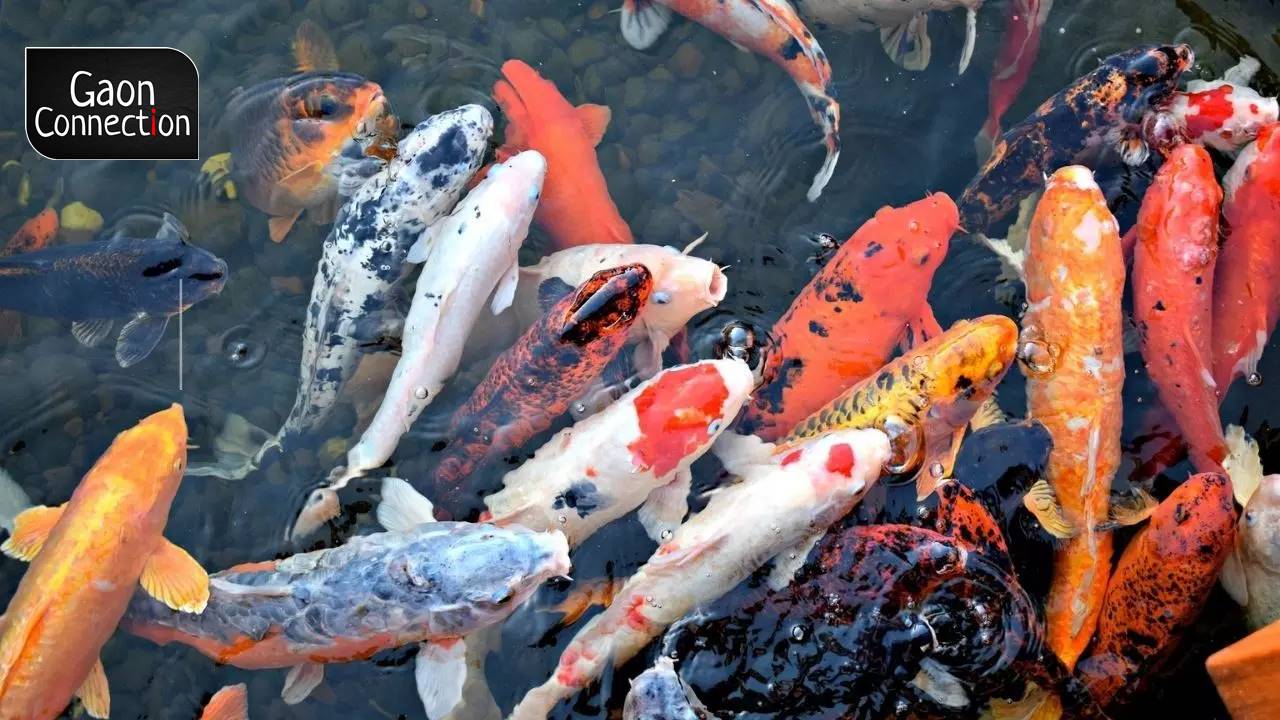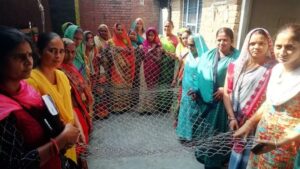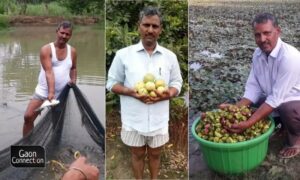It was a hobby that Rajesh Ranjan Mahapatra transformed into a business and has now launched a training school in Cuttack district of Odisha. A collector of ornamental fishes in Anandpur village, Mahapatra opened the first ever Ornamental Aquaculture Field School in the state earlier this month on September 4.
With the support of Bhubaneswar-based Central Institute of Freshwater Aquaculture (CIFA), this new school will train people, including tribal women, in aquaculture.
“In the beginning I just had an aquarium with ornamental fish. But somewhere along the way, I decided to take up fish culture full time and now I have my own training school too,” the 42-year-old fish farmer, told Gaon Connection. “Today, all of Odisha buys ornamental fishes from me, which were earlier sourced from Kolkata” he said proudly.
Also Read: Matsya Setu, an app exclusively for the fish farmers in India
According to the fish farmer, he couldn’t have done it without the support of Saroj Kumar Swain, the director of CIFA. “He was a huge support to me and mentored me constantly,” Mahapatra said with gratitude.
Scientists at the aquaculture institute are proud of Mahapatra’s achievements too. “Mahapatra has been associated with CIFA for several years now, and we offered him all the technical support he needed and assured him of all support in his venture,” Swain told Gaon Connection.
A small beginning
After pursuing his hobby of collecting ornamental fishes, in 2007, Mahapatra decided to go big. He started off in his village Anandpur, but soon realised that a much bigger area was needed to take his dream to the next level.
“I looked but did not find anything suitable in my own village and finally in 2017-18, I bought five acres of land about forty kilometres away from home,” said the fish farmer.
Mahapatra’s fish farm slowly took root at Kochila Naugaon in Tangi Choudwar block of Cuttack, a little more than 50 kilometres (kms) away from the state capital, Bhubaneswar.
It took Mahapatra six to eight months to prepare the five acres of land he had bought, on which he built more than a hundred tanks.
But it was not all smooth when Mahapatra started out. “No one wanted to buy ornamental fishes from me because they were used to getting them from Kolkata that supplies them to the entire country, and they were not sure if the quality of my fishes were up to the mark,” he recollected.
The fish farmer persevered and instead of trying to get the wholesalers to buy from him, he began networking with smaller shopkeepers. And it paid off.
“Now so many people from Odisha come to me for know-how and even during the lockdown, many of them started their businesses,” Mahapatra said with pride.
A lucrative source of income
Fifteen people who trained under Mahapatra have also started their own ornamental fish business.
“It is a lucrative business. I had to invest about two lakh rupees to get the fishes ready,” said the fish farmer. Last year, according to him, he earned Rs 6.5 lakh (Rs 650,000). “I am confident my earnings will go up gradually,” he added.
Speaking about the launch of the new training school, Swain from CIFA said, “We felt setting up an aquaculture school here would enable others to be trained. We cannot reach every single farmer. But, if we train a person, he or she can then take it forward and train others.
Also Read: Fish feed made from litchi seeds to cut costs for the fish farmer by 25%
Apart from farmers, the Ornamental Aquaculture Field School will also impart training to women from the Adivasi communities, said Swain. “We will give them government support. The women will grow the fish that they will then give to Mahapatra who will sell them,” the scientist added.
According to the CIFA director, there is a similar school of ornamental fish culture that was started in Jalpaiguri in West Bengal where many people are being trained in aquaculture.
Government support for aquaculture
The Pradhan Mantri Matsya Sampada Yojana, an initiative by the Government of India, encourages fish farming in the country. There are several categories under this initiative that can help farmers start their own fish culture.
People from the general category get a subsidy of 40 per cent from the government while women and SC/ST (Scheduled Castes/Scheduled Tribes) get a 60 per cent subsidy.
Also Read: Fisheries is India’s sunrise sector. Want to start fish farming? Learn sitting at home
In the first small-sized category of business, there is a backyard ornamental fish cultivation unit for both fresh water and sea water cultivation, that requires an investment of Rs 300,000. Those in the general category, who are interested in starting the business, can get a subsidy of Rs 120,000, and for women and those of SC/ST the subsidy is Rs 180,000.
In the second category, that is medium sized, also for freshwater and saltwater cultivation, the investment is Rs 800,000 of which Rs 320,000 subsidy is offered to the general category and Rs 480,000 subsidy to women and the SC/ST.
Another category for the cultivation and reproduction of ornamental fish for freshwater, requires an investment of Rs 2.5 million. The general category people can avail a subsidy of Rs one million, while women and SC/ST are eligible for a subsidy of Rs 1.5 million.
Also Read: Rainbow trouts rain profits for farmers in Kashmir
Meanwhile, investment for ornamental fishes for sea water costs Rs 3 million with Rs 1.2 million subsidy for general category and Rs 1.8 million for women and SC/ST.
For establishing a brood bank for freshwater ornamental fish, the investment would be Rs 10 million with the general category people getting a subsidy of Rs 4 million and women and SC/ST getting a subsidy of Rs 6 million.
In order to establish recreational fisheries, the investment would be Rs 5 million with a Rs 2 million subsidy being offered to general category people and a Rs 3 million subsidy for women and SC/ST.
Read the story in Hindi



















